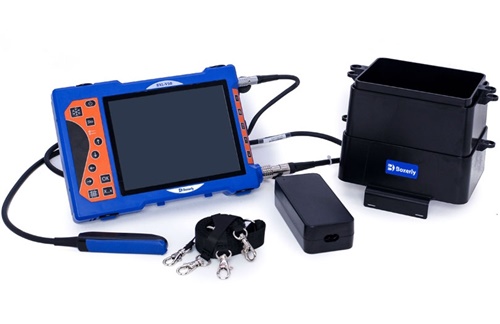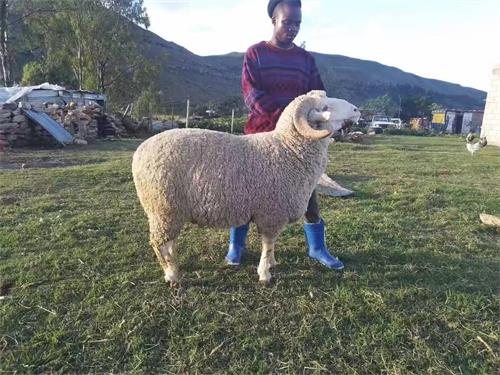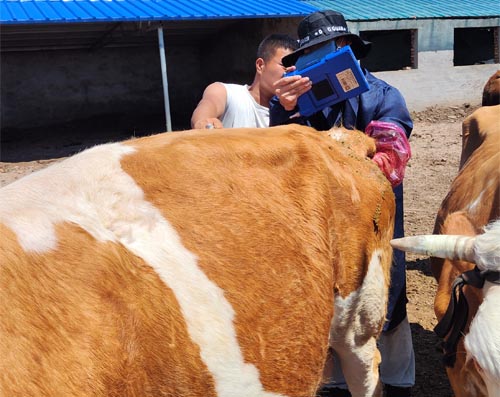How Ultrasound Technology is Transforming Veterinary Practice
Ultrasound has quietly revolutionized modern veterinary medicine, offering a non-invasive, real-time diagnostic window into the inner workings of animals—large and small. From reproductive assessments in livestock to abdominal imaging in companion animals, ultrasound is no longer a luxury in veterinary clinics or farms; it has become a vital necessity. By delivering timely, detailed insights into organ function, soft tissue structures, and physiological changes, this technology has drastically improved animal welfare, diagnostic accuracy, and management efficiency across species.

Enhancing Reproductive Management in Livestock
One of the most impactful uses of ultrasound in veterinary practice lies in reproduction. On cattle and swine farms, the ability to confirm pregnancy early and accurately can significantly influence herd management decisions. Transrectal or transabdominal ultrasound enables veterinarians and producers to detect pregnancies as early as 25 days post-breeding in cows, reducing the uncertainty of visual observation or palpation. For sows, pregnancy can be diagnosed within 21–28 days post-mating, enabling better housing and nutrition strategies.
Beyond detection, ultrasound allows the assessment of fetal viability, number, and developmental stage, which helps plan for labor management, optimize nutrition, and predict farrowing or calving windows. With this data, farmers can synchronize breeding programs, reduce non-productive days, and enhance the reproductive efficiency of their herds.
In countries like the U.S., Australia, and Germany, routine ultrasound examinations have become standard in large-scale animal breeding operations, thanks to portable machines and skilled veterinarians. These advancements are particularly vital in managing artificial insemination programs and embryo transfer procedures.
Improving Diagnostic Accuracy in Companion Animals
In small animal practice, ultrasound has become as indispensable as stethoscopes. It plays a crucial role in diagnosing conditions affecting the liver, kidneys, spleen, bladder, uterus, and gastrointestinal system. When a dog presents with non-specific symptoms like vomiting, weight loss, or lethargy, an ultrasound scan can quickly uncover internal masses, fluid buildup, or organ enlargement.
Cardiac ultrasound, or echocardiography, is used extensively to evaluate the heart’s structure and function, especially in aging dogs and cats. It is essential in diagnosing conditions like mitral valve disease, cardiomyopathy, and pericardial effusion—common problems in older or breed-prone animals.
Foreign veterinary practitioners consistently emphasize the value of ultrasound in non-invasive diagnostics. In a survey published by the American Animal Hospital Association (AAHA), over 60% of companion animal clinics reported using ultrasound weekly to improve diagnostic speed and treatment outcomes.
Early Detection of Disease in Production Animals
For food-producing animals, disease control is not only a welfare issue but a financial imperative. Ultrasound enables early detection of subclinical conditions—those that have not yet presented outward signs. For example, in dairy cows, ultrasound can detect ovarian cysts or uterine fluid accumulation after calving, allowing for prompt intervention to prevent reproductive delays.
In swine operations, ultrasonography is commonly used to monitor post-farrowing complications, such as retained placentas or uterine infections, which can affect sow productivity in subsequent cycles. Early diagnosis helps reduce antibiotic use, promotes faster recovery, and ensures continued production efficiency.
Large herds in Europe and North America have integrated ultrasound scanning into routine health protocols, often pairing it with herd management software to track long-term data on individual animals. This approach enhances decision-making and reduces economic losses due to reproductive or metabolic disorders.
Real-Time Monitoring of Growth and Fat Composition
For beef and pork producers, knowing when to send animals to market is a critical economic decision. Traditional methods of judging readiness based on visual appraisal or weight are being replaced by ultrasound measurements of backfat, loin muscle area, and marbling. These parameters provide a clearer picture of carcass quality and meat yield.
Ultrasound is particularly valuable in tracking the growth phases of young cattle. As livestock producers aim for lean yet well-marbled meat, knowing precisely when muscle growth slows and fat deposition begins helps optimize feed efficiency and slaughter timing. Veterinary ultrasound provides this insight quickly and painlessly, reducing overfeeding and improving overall profitability.
In countries like Canada and Brazil, government-backed carcass quality programs rely heavily on ultrasound data to determine breed merit and payout premiums to producers. These programs have helped create a feedback loop where producers use ultrasound data to improve genetics, feeding strategies, and marketing decisions.
Better Outcomes in Emergency and Surgical Situations
In emergency veterinary care, ultrasound offers rapid answers when time is critical. It is widely used for trauma cases to detect internal bleeding or organ rupture through focused assessment with sonography for trauma (FAST) scans. This is especially relevant in equine medicine, where quick evaluation of abdominal organs in colic cases can guide urgent surgical decisions.
For surgical planning, ultrasound provides detailed images of masses, cysts, or fluid pockets, helping veterinarians avoid unnecessary procedures or better prepare for what lies ahead. Needle-guided aspirations or biopsies are also more accurate and safer when conducted under ultrasound guidance, reducing the risk of complications.
Veterinarians in the UK, Japan, and the Netherlands have led innovation in portable ultrasound use during field surgery, often using handheld, battery-operated devices with high-resolution imaging. These tools have become essential in equine and bovine practice, where mobility and fast diagnostics are vital.
Versatility and Portability in Remote and Field Settings
Modern veterinary ultrasound devices are smaller, smarter, and more durable than ever. From rugged farm environments to busy clinics, portable ultrasound scanners like the BXL-V50 have changed the game. With a waterproof body, long battery life, and a high-definition display, these units enable vets to diagnose animals quickly, even under less-than-ideal conditions.

In remote areas of Africa and Southeast Asia, mobile ultrasound is used for disease monitoring, wildlife conservation, and reproductive assistance in cattle, goats, and even elephants. Non-governmental organizations and research institutes often rely on such equipment for outreach work in rural veterinary medicine.
The global trend shows a rising demand for field-ready veterinary ultrasound, especially in developing economies where access to advanced diagnostics is otherwise limited. By bringing accurate imaging to the animal instead of transporting the animal to a clinic, ultrasound has bridged the gap in rural animal health services.
Key Advantages of Ultrasound in Veterinary Medicine
Veterinarians and producers around the world cite several consistent advantages of using ultrasound:
-
Non-invasive and pain-free: Causes minimal stress to animals, even when used repeatedly.
-
Real-time imaging: Offers immediate feedback for diagnosis, treatment, or procedural planning.
-
High precision: Enables accurate measurement of tissues, organ changes, and fetal development.
-
Cost-effective: Reduces the need for exploratory surgery or delayed diagnosis.
-
Versatile: Applicable across species, from poultry and pigs to horses and dogs.
-
Environmentally friendly: Reduces chemical use and supports more targeted treatments.
These benefits make ultrasound an increasingly essential component of veterinary care in both developed and developing nations.
Training and Adoption Across Countries
The expansion of ultrasound use in veterinary practice has been supported by continuing education programs and telemedicine platforms. Many veterinary schools in the U.S., Germany, and South Korea now include hands-on ultrasound training in their core curriculum. Certification programs offered by organizations such as the American College of Veterinary Radiology (ACVR) or the British Veterinary Ultrasound Society (BVUS) further professionalize this field.
In developing countries, aid-supported training initiatives have been rolled out to teach local veterinarians how to use portable ultrasound machines to manage herd health and reproduction. These global efforts reflect a growing awareness of the technology’s potential and a shift toward more precise, welfare-oriented veterinary care.
Conclusion
Ultrasound is no longer just a supplementary tool—it is a cornerstone of modern veterinary diagnostics and herd management. Whether monitoring fetal health in dairy cows, identifying internal injuries in horses, or guiding needle biopsies in dogs, the technology provides real-time, accurate, and safe insights that improve outcomes for animals and their caretakers alike.
Its versatility, affordability, and ease of use have fueled widespread adoption across continents and species. As more veterinarians and producers recognize the value of ultrasound, its integration into everyday animal health practices will only deepen. For animal agriculture, small animal medicine, and even wildlife conservation, ultrasound is proving to be one of the most transformative tools of the 21st-century veterinary landscape.
Reference Sources
-
Whitaker, D. A., & Smith, E. (2021). Veterinary Ultrasonography in Food-Producing Animals. Journal of Veterinary Imaging.
-
Beef Cattle Institute. (2023). “Use of Ultrasound for Growth Evaluation in Cattle.” https://www.beefcattleinstitute.org/ultrasound-growth
-
American Animal Hospital Association (2022). “Veterinary Diagnostic Imaging Use Survey.” https://www.aaha.org
-
British Veterinary Ultrasound Society. https://www.bvus.org.uk
-
World Organisation for Animal Health (OIE). https://www.woah.org





